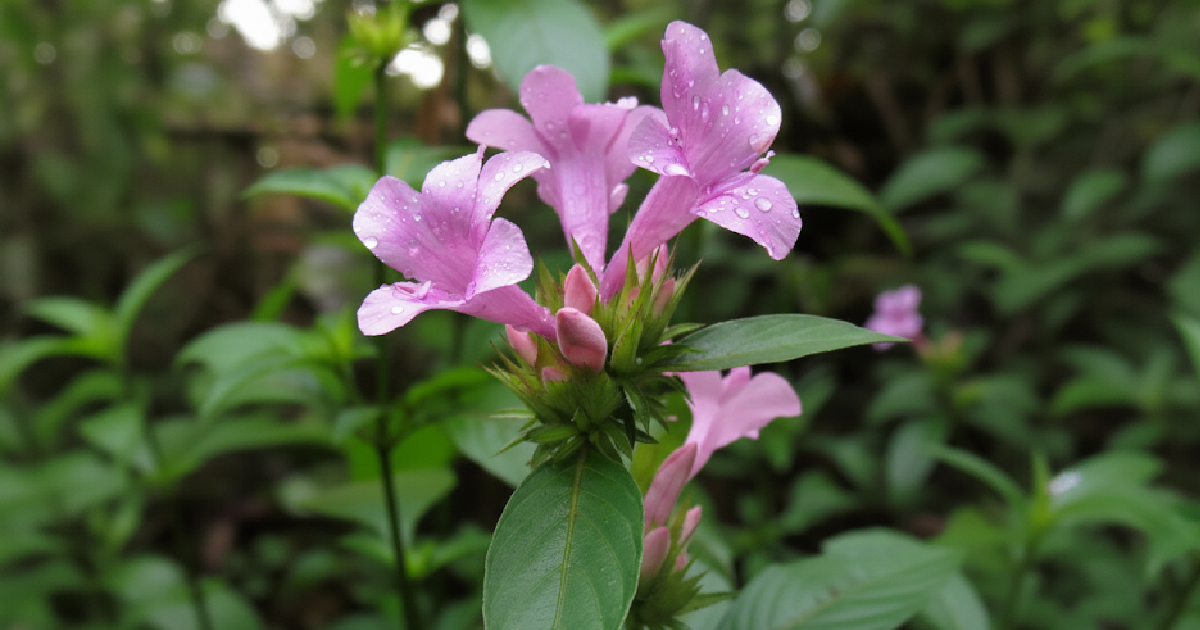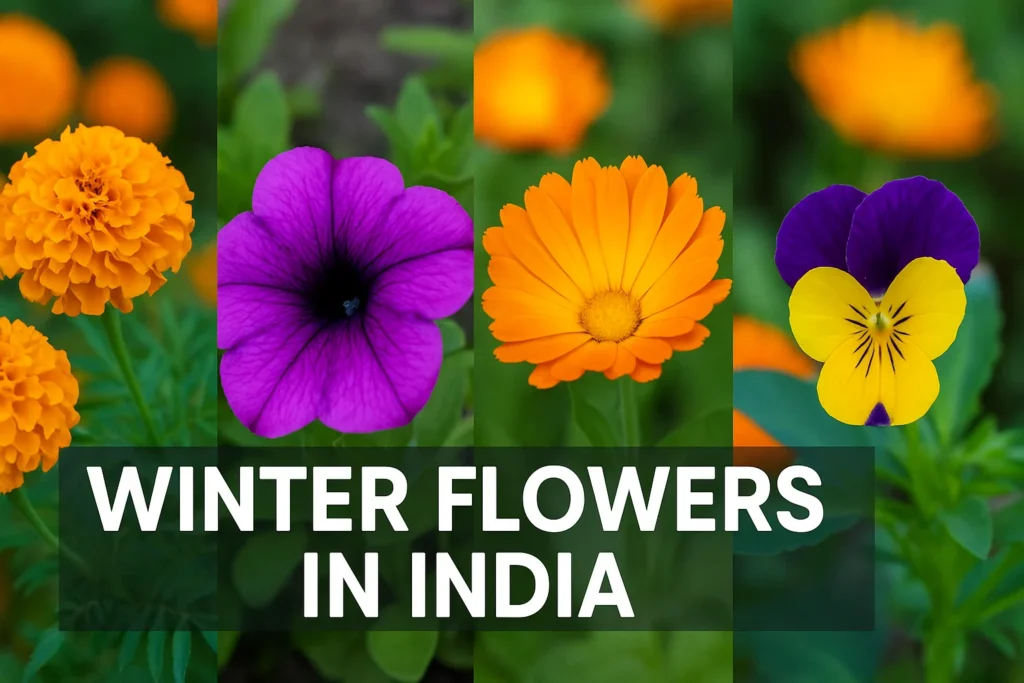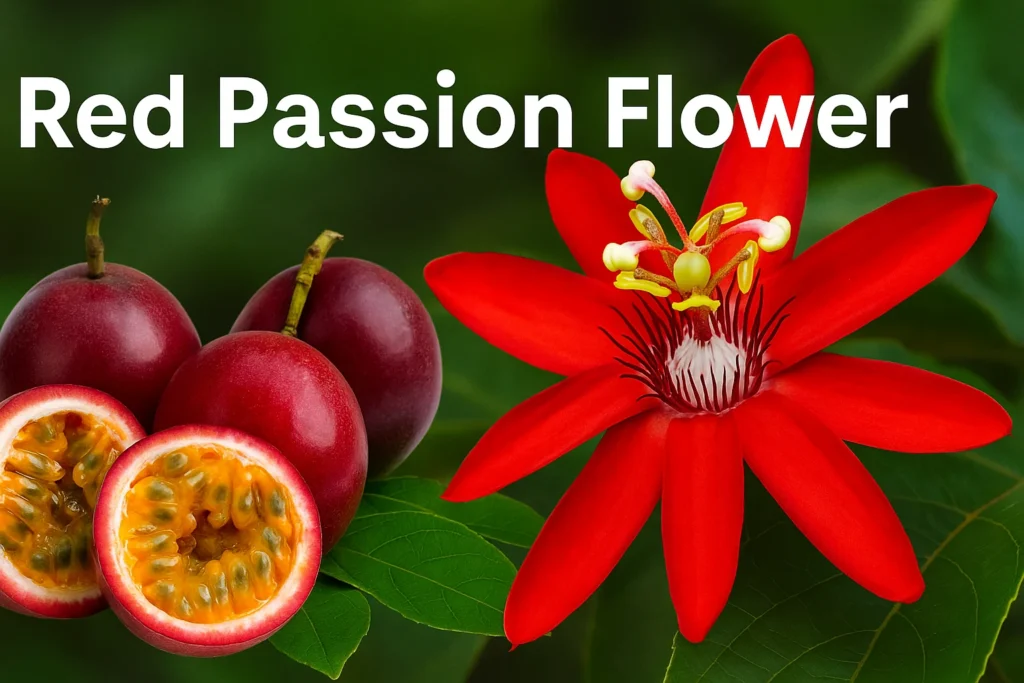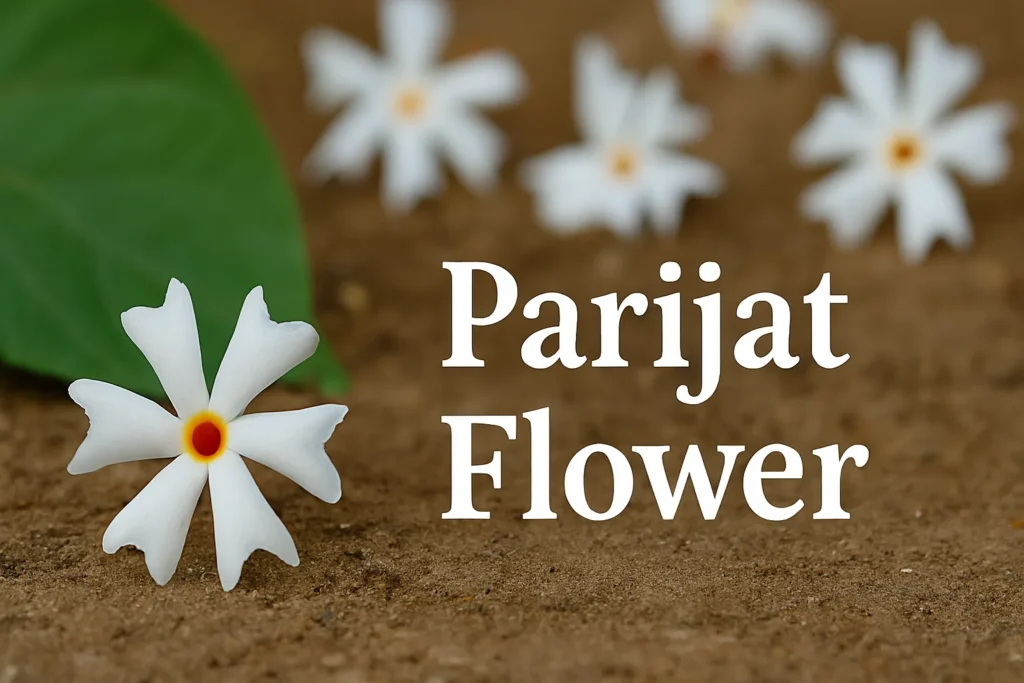The Spatika flower, fondly called the December flower in South India, lights up gardens just when temperatures begin to dip. This compact shrub forms neat mounds of glossy foliage and covers itself with funnel shaped blossoms in violet, lavender, white, or pink. It is easy to grow in pots and beds, responds well to pruning, and has long been woven into seasonal décor, hair adornments, and temple offerings. In this guide you will find the correct English name for Spatika, how the plant looks and performs, how to grow it at home, and where it fits in Indian garden culture.
What is Spatika Flower?
Spatika is the South Indian common name for Barleria cristata, a perennial subshrub from the Acanthaceae family. It is native to tropical Asia and thrives in the warm, humid conditions found across much of India. The plant forms a rounded habit between sixty and one hundred twenty centimeters tall, stays evergreen in warm districts, and bears clusters of flared, bell like blooms at shoot tips. The nickname December flower comes from its dependable cool season bloom. Peak flowering usually spans November to January when many other ornamentals are slowing down. The shrub is tolerant of heat once established, yet it reserves its best display for the cooler months, which is why nurseries sell it in large numbers before winter festivals.
Spatika Flower in English
The Spatika flower in English is most widely known as Philippine violet or Bluebell barleria. Some catalogs list it as Crested Philippine violet, especially when the petals show a ruffled appearance. All of these names refer to Barleria cristata. The combination of bluebell like flowers and a compact shape makes it a favorite for small urban spaces that need seasonal color. If you are compiling multilingual plant labels, our overview of all about flowers name in Sanskrit and Hindi is a useful companion reference.
Why it is Also Called December Flower?
Gardeners across Tamil Nadu, Karnataka, Andhra Pradesh, and Kerala call Barleria cristata the December flower because it reaches peak bloom during the year end. This timing makes it a natural choice for weddings, school functions, and temple events that cluster around the festive period. The plant flowers in waves. After a flush you will see new shoots form and set buds again if you lightly tip prune and keep the soil evenly moist. For a broader view of cool season options, this guide to winter season flowers in India shows other companions that complement Spatika in December displays.
Botanical Description and Key Features
A mature Spatika plant has upright, branching stems with opposite, ovate leaves that are smooth to the touch and mid to dark green. The flowers appear in short terminal spikes. Each bloom has a tubular base and a flared five lobed corolla, which is why the common English names emphasize violet and bluebell. Color forms include deep violet, soft lavender, snow white, and warm pink. White forms stand out in twilight gardens, while violet varieties create dramatic blocks of color when planted en masse. Because flowers are borne on fresh growth, the plant responds to light shaping by producing more flowering shoots. For readers who enjoy bell shaped blooms, the look is loosely reminiscent of the bluebell flower, though the two are botanically unrelated.
Spatika Flower Plant Care and Growing Conditions
Spatika rewards even modest care with generous flowering. Use these quick care steps to keep plants tidy and productive.
- Site and Soil: Provide five to six hours of direct sun and a free draining, loamy or slightly sandy soil enriched with compost. In containers, choose a potting mix that does not hold water for long periods.
- Water: Water thoroughly when the top centimeter of soil dries. Avoid chronic waterlogging, which causes yellowing leaves.
- Feeding: Mix in compost at planting, then top dress or feed with a balanced organic fertilizer at the start of the cool season and again midway through flowering.
- Pruning: After each bloom wave, pinch the soft tips or lightly shear the plant to stimulate branching and new flower buds.
Balconies and rooftops benefit from layered plantings that mix seasonal color with structure. For layout inspiration that suits small spaces, explore these terrace garden ideas for home.
Propagation Methods for Spatika Flower Plant
Spatika multiplies readily by cuttings and by seed. Softwood cuttings eight to ten centimeters long root well in a moist, airy medium under bright shade. Remove the lower leaves, keep the propagating tray humid, and expect roots in three to four weeks. Seed propagation is also straightforward. Allow a few flowers to set seed, collect mature capsules when the cluster browns, and sow them in a warm, bright location. Seedlings grow fast and will reach flowering size by the next cool season. If you want a quick refresher on cutting techniques and aftercare, see how it is done in this step by step guide to how to grow jade plant from cutting.
Landscape Uses and Design Ideas
Spatika’s compact, domed habit makes it suited to borders, path edging, and container groupings. In beds it can be mass planted to create a single color block or staggered with white winter annuals for contrast. On terraces a pair of white forms in identical pots flanking a doorway looks crisp through the season. In subtropical gardens where it remains evergreen, a light late winter trim keeps shrubs dense and ready for the next flowering cycle. To round out a home garden palette with dependable performers, consult this curated list of best flower plants for home garden in India.
Cultural Significance and Traditional Uses
Because the plant blooms when festivals and weddings are common, the December flower has become a familiar part of year end décor. In many South Indian homes, fresh sprays are set near altars, woven into simple hair adornments, or used to brighten entryways before guests arrive. Its popularity is practical as well as cultural. The shrub is easy to keep, inexpensive at local nurseries, and produces enough flowers to share with neighbors. If you enjoy reading about blossoms with deep cultural resonance, the lotus flower offers a rich window into symbolism and tradition.
Health and Wellness Notes
Barleria species appear in several ethnobotanical references for potential cooling and anti inflammatory properties, though Spatika is grown primarily as an ornamental in home landscapes. If you plan to experiment with traditional preparations, consult qualified practitioners and rely on peer reviewed sources. For a broader tour of common household botanicals used in wellness traditions, this overview of medicinal plants in Kerala is a practical place to start.
Varieties and Color Forms
Nurseries carry single and crested forms in violet, lavender, white, and pink. Compact strains are excellent for balcony planters, while taller selections suit low hedges and mixed borders. Mixing two color forms within a bed creates depth without visual clutter. White cultivars are especially effective under evening lights. To extend color beyond winter and bridge the seasons, consider adding long running annuals like those profiled in the zinnia flower guide.
Common Problems and Easy Fixes
Spatika is generally trouble free. These quick checks resolve most issues.
- Yellow Leaves: Usually a sign of soggy soil. Improve drainage, reduce watering frequency, and aerate the potting mix.
- Tall, thin growth with few flowers: Move the plant to a brighter position and tip prune after a bloom wave to stimulate branching.
- Pests: Occasional aphids or caterpillars can be dislodged with a jet of water or treated with a mild soap spray after sunset.
For very low maintenance companions that add structure to mixed containers, see our primer on resilient cactus plants.
Conclusion
Spatika flower, correctly identified as Barleria cristata and widely known as the December flower, is one of the most rewarding shrubs for Indian winters. Under its English names Philippine violet and Bluebell barleria, it is valued for a compact habit, reliable cool season color, and responsiveness to light pruning. Provide sun, free drainage, and occasional pinching, and the Spatika flower plant will deliver weeks of bloom across beds, borders, and balcony pots.













